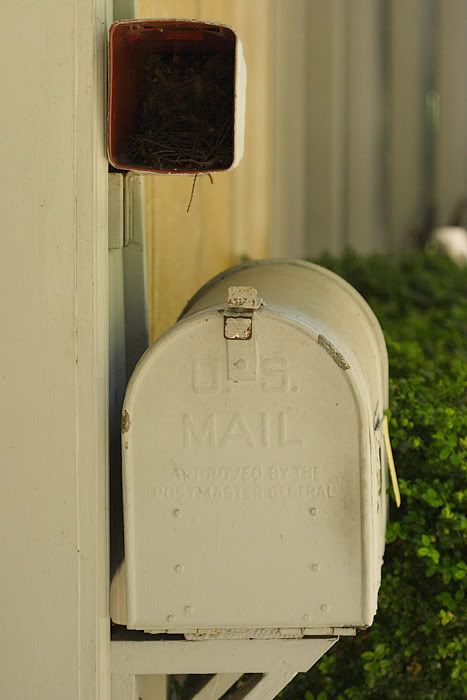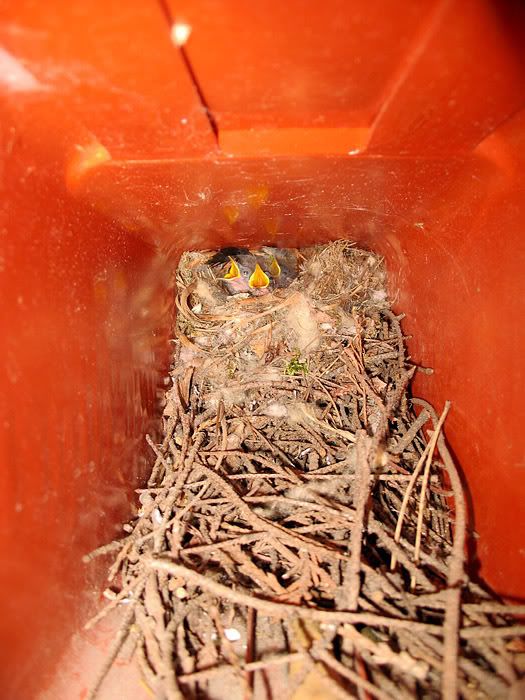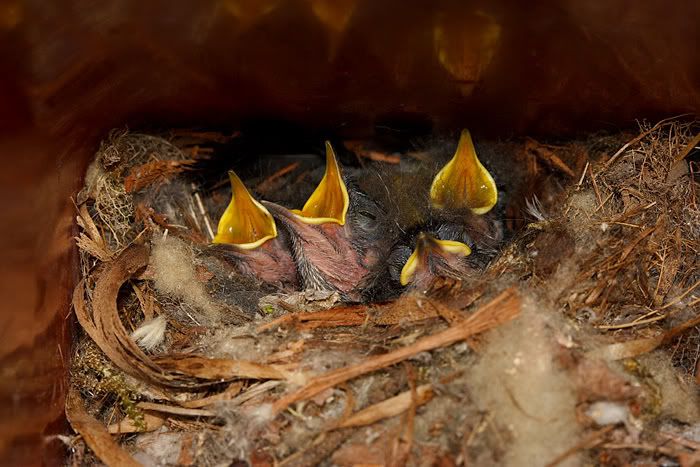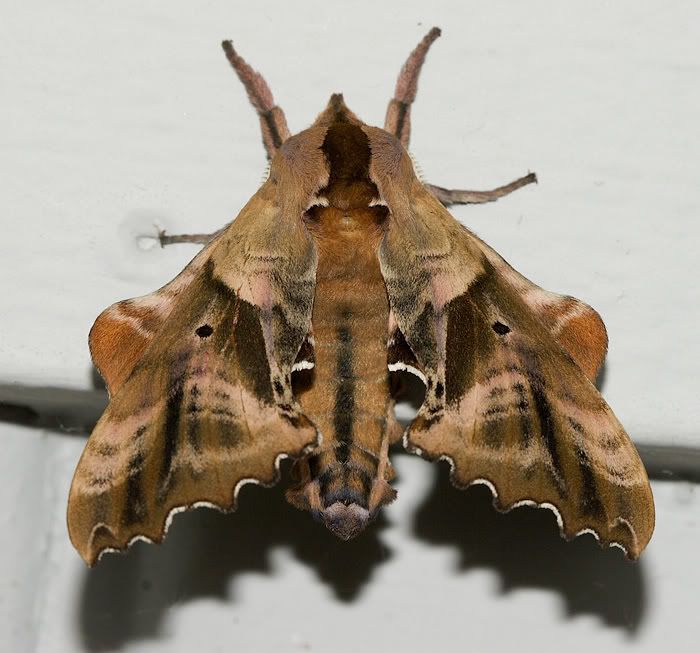Bewick's wrens seem to prefer cavities or nooks of one kind or another to nest in. I was under the impression that they had given up nesting, because their nest box was occupied. But, this was not the case. They instead nested on the front side of the house. But, where exactly? Well...

Yeah, that's right. They opted for something more modern and more ventilated. In the corner of the newspaper box right above the mail box, they made a cozy nest.
Last year, there were a few sticks in the box. The sticks were large, too large for a little wren to carry. Probably, it was the start of a robin nest. Though, it was likely abandoned because there was a lot of human traffic at certain times of the day.
Now, there is a healthy nest full of little wrens.

I am not certain whether the birds find the rich, red color to their liking or not. Can't think of a single bird house I have ever seen that had such a color on the inside of the house.
Notice how the nest is tucked into the corner, with just a bit of an opening near the top. Also, look at the materials that make up the nest that sits on top of the larger sticks. There is some red cedar bark strips, moss, clumps of cattail down and balls of fluffy material we set out for the birds in an old suet feeder. It looks quite snug and warm - and would need to be - especially this spring which has been very cold even well into the month of June.
For some reason, not entirely clear to me the little birds seem to get excited when I come near the nest. This is not the case when anyone else in the house comes near to it, though. The sound of the camera shutter clicking and the flash going off also seemed to excited them. You can see their increasing excitement below as I take several photos of them in sequence.


The male wren of this pair can often be heard singing loudly in the mornings and evenings in the backyard or front yard hedges. This species seems to prefer foraging, singing and living most of their lives in low thickets and hedges along edge habitats. In urban and suburban areas, they can be found around houses that have dense rhododendron clumps mixed with other native and non-native shrubs with dense growth forms.
They are one of the most beautiful voices we have the pleasure of waking up to each day.
Near the nest, their was another amazing creature roosting during the day. Were it not perched on such a strongly contrasting background I am not sure we would have seen it. I believe this is the first time we have seen this species.

Hidden under those long, scallop-edged fore wings are much more colorful hind wings. Those smaller hind wings have a single eye-spot on each of them surrounded by brilliant pink. This species has eye-spots that have no "pupils" but rather, have a cloudy bluish-gray center not unlike an eye filled with a cataract. This gives the species its name: blinded sphinx moth.
The exact purpose of the eye-spots on insects such as moths, butterflies and praying mantids is still a mystery. There is some debate as to whether these eyes are used to scare off or intimidate potential predators. Here is a recent article in National Geographic about this:
http://news.nationalgeographic.com/news/2008/02/080222-butterfly-eyespots.html
3 comments:
Cool looking moth!
Isn't it amazing what we can find in our own back (or front) yards!?
Yes, it really is amazing!
Post a Comment